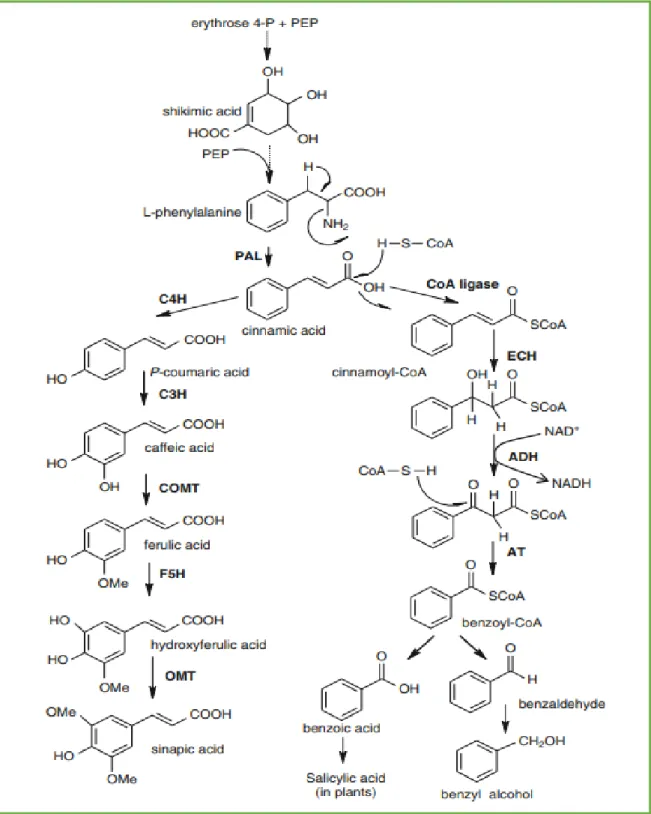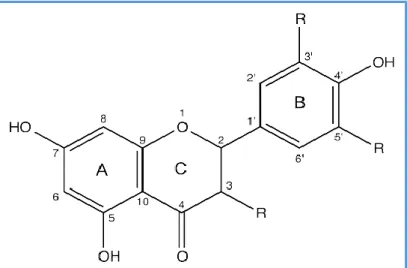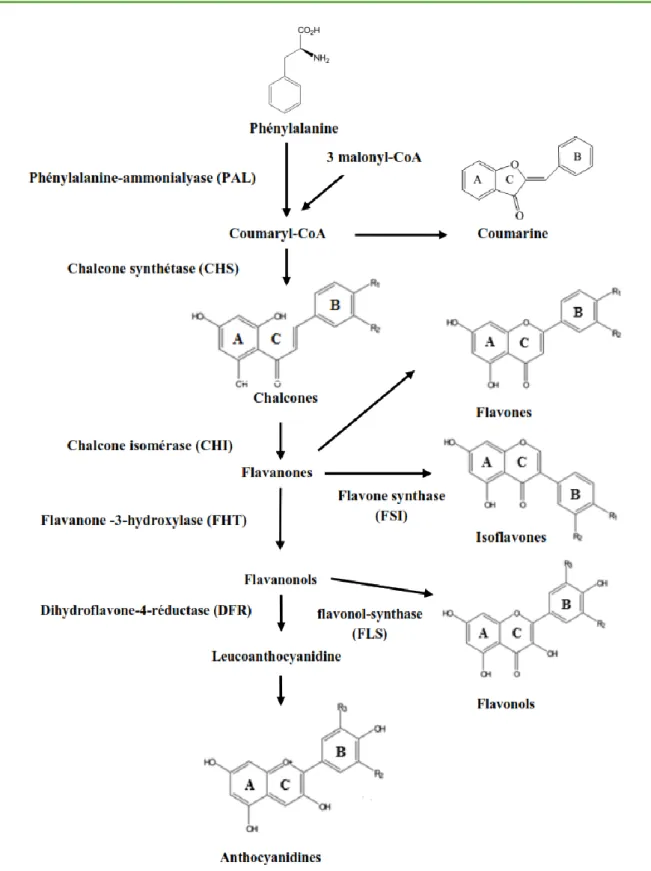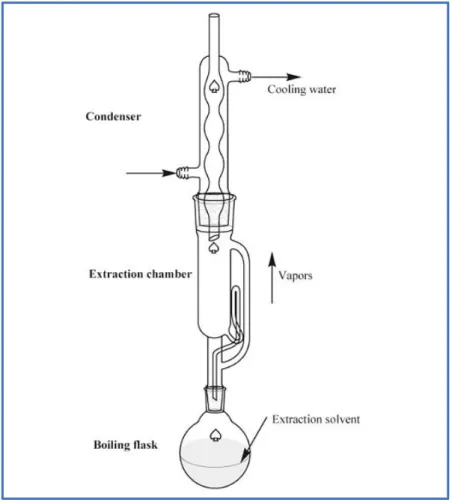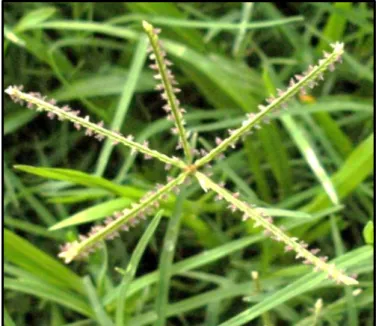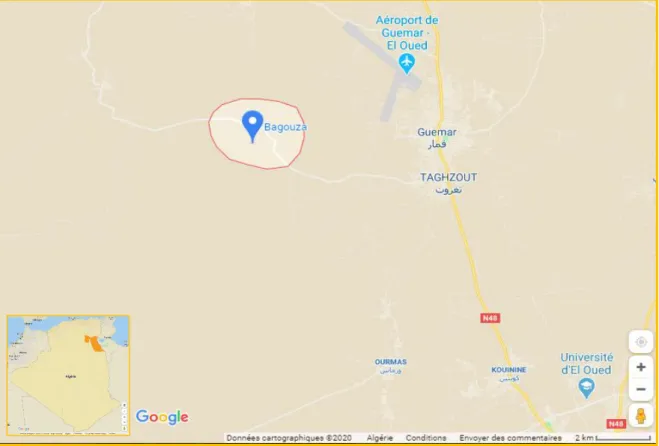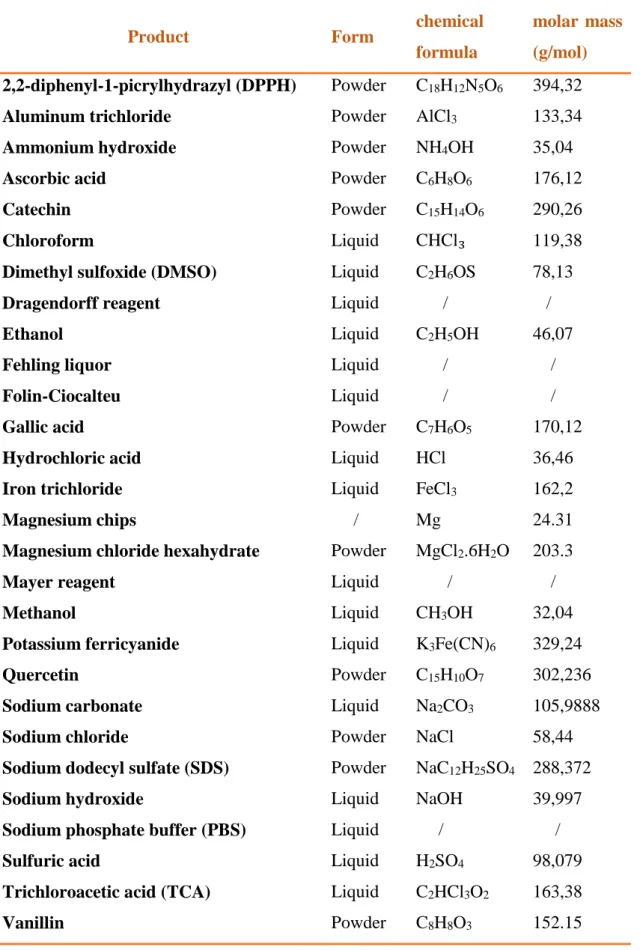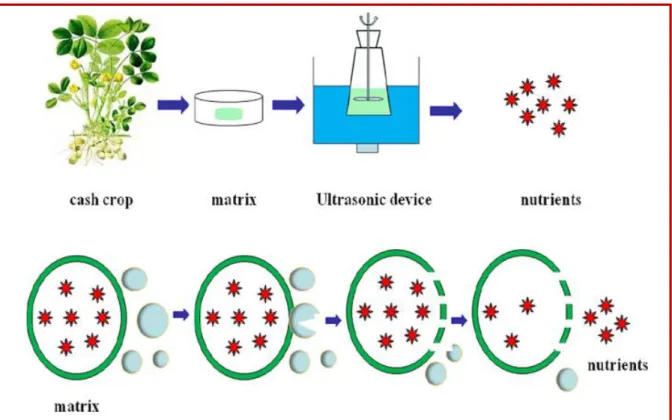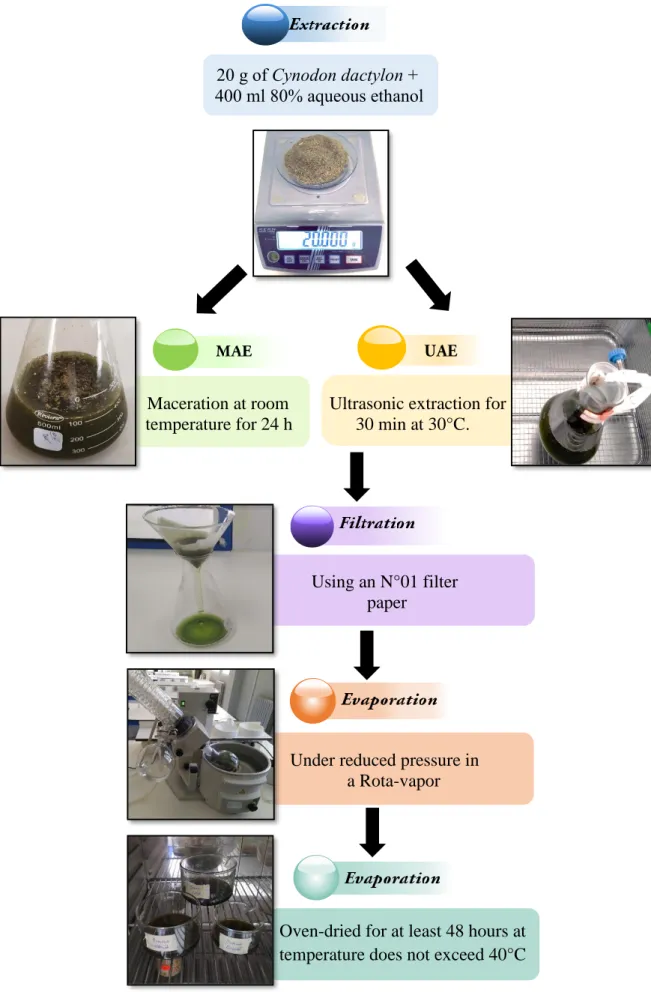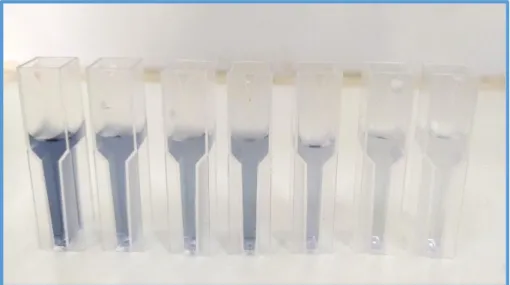يملعلا ثحبلاو يلاعلا ميلعتلا ةرازو يداولا رضخل همح ديهشلا ةعماج مولع ةيلك ةايحلاو ةعيبطلا ةيئيزجلاو ةيولخلا ايجولويب مسق
Master's thesis
Dedication
Not all letters can find the right words
All words cannot express gratitude, love, respect,
recognition, it is simply that I dedicate this memoir
To my perfect parents:
No dedication can express my respect, my eternal love
and my consideration for the sacrifices you have made for my
education and my well-being. Thank you for all the support and love
you have shown me since my childhood. May this modest work be the
fulfillment of your wishes so formulated, the fruit of your countless
sacrifices, although I will never pay you enough
May God, the highest, grant you the health, happiness and long life
and make sure that never I will not disappoint you.
To my dear sisters and brothers:
I love you and that I deeply love. As a testimony
of my fraternal affection, of my deep tenderness, I wish
you a life full of happiness and success and may God,
the almighty protect and guard you.
To my friends
Our study focused on the research of the antioxidant and antimicrobial activity effect, as well as the evaluation of the cytotoxic effect of ethanolic extracts from the aerial part of Cynodon dactylon L (Poaceae family) extracted using two methods maceration assisted extraction (MAE) and ultrasound assisted extraction (UAE).
The phytochemical tests realizedhave highlighted various secondary metabolites in the aerial part of the plant including saponosides, terpenes, alkaloids, reducing sugars, cardiac glycosides, flavonoids and polyphenols. The yields of crude extracts were 9.40% for the MAE extract and 12.52% for the UAE extract.
The results of the estimation of the phenolic compounds showed that the extract obtained by MAE contains a high level of polyphenols and total flavonoids estimated by (42.14 ± 0.75 mg EAG / gE and 23.57 ± 0.78 Mg EQ / gE), compared to the extract obtained by the UAE, which estimated by (29.93 ± 0.14 mg EAG / gE and 13.53 ± 0.33 Mg EQ / gE). In contrast, the content of condensed tannins in the extract of UAE (19.34 ± 0.48 Mg EC/gE) is higher than the extract of MAE (15.99 ± 0.63 Mg EC/gE).
The evaluation of the antioxidant activity, carried out by two methods (Trapping of the free radical DPPH and ferric reducing antioxidant power FRAP) revealed a considerable antioxidant response. the DPPH test revealed that the MAE extract represents the most active extract, with an IC50 =7.52 ± 0.037 mg / ml and followed by the UAE extract with an IC50 = 8.83 ± 0.032 mg / ml. The same for the FRAP test, with value of 15.83 ± 0.37 mg EAA / g for MAE extract, followed by the UAE extract with a value of 15.38 ± 0.12 mg EAA / g.
The antibacterial activity was evaluated against four strains: Pseudomonas aeruginosa, Salmonella Typhimurium, Staphylococcus aureus and Bacillus cereus. Also the antifungal activity against two strains Aspergillus carbonarius and Aspergillus parasiticus. the results that we have reached show that all the strains targeted have high susceptibility to the two ethanolic extracts of Cynodon dactylon L.
The evaluation of cytotoxicity against RBCs was carried, the results shown the non-toxic effect of C. dactylon extracts. Thus making it suitable for the preparation of drugs involved in the treatment of various diseases.
Keywords: Cynodon dactylon, phenolic compounds, antioxidant activity, antimicrobial activity, cytotoxicity.
ا ثحبتتتتتتتتتتسارد تزكر
ن
ريثأت
ا
دثتتتتتتتتتت ةا تتتتتتتتتت ك دثتتتتتتتتتت ةا كثتتتتتتتتتتشن
،تثب ركيمل
مييقت
ريثأت
يمتتتتتتتتتت ا
يولخلا
تي و ثت تثتتتتتتتتتتتتتت لةيتتتتتتتتتتتتتت مل
ممح ا تثت نم يئاوه ا ءزجل
Cynodon dactylon L.(
يليمح ا تللثتع ا
،نييقيرط ما ةيسثب جرةي ةا
ب جارةيس
طساو
ب جارةيس عقح ا
طساو
. يتو ا قوف تثجوةا
ءزجلا يو ث ا تث لقيتتتتتتتتتتتتت ةا نم ع ا ءوتتتتتتتتتتتتت ا قق ةا يتث ح ا يلثيميك ا تارث يي كطلتتتتتتتتتتتتتس ق
ثمب تث ح ا نم يئاوه ا
تا يولق ا ،تا ياو وبثتتتتتتت ا ،تثحيبرت ا ك ذ
كتتتتتتت ا ،
ا يتتتتتتتسوكيلجلا ، عجرةا تثير
، ي لق ا ت
.لوحيفي و ا تا ي وفلاف ا
يح
مثخلا تث لةي ةا د درم غلب
ن
9.40 ٪مل
صلةي
جرةي ةا
طساوب
عقح ا
ن
12.52 ٪مل
صلةي
طساوب جرةي ةا
. يتو ا قوف تثجوةا
ترهظأ
جلثي
ر قت
تث كرةا
ي وحيف ا
نأ
صلةيتتتتتتتتتتتت ةا
يذ ا
مت
لوتتتتتتتتتتتت حلا
هيل
طتتتتتتتتتتتتساوب
عقح ا
يوي
ىوي م
لث
نم
لوحيفي و ا
لثمجالإ
تا يو وفلاف ا
ر قةا
تتتتتتتتتب
(
42.14 ± 0.75غم
ئ ثكم
نم
ضمح
كي ثغ ا
/
غ
نم
دثةا
فثجلا
23.57 ± 0.78
غم
ئ ثكم
نم
نيييتتسرك ا
/
غ
نم
دثةا
فثجلا
،
رثقم
صلةيتت ةثب
يذ ا
مت
لوتت حلا
هيل
طتتتتتتتتتتساوب
تثجوةا
قوف
يتوتتتتتتتتتت ا
،
يت ا
ر ق
ت
تتتتتتتتتتتتتتتتتتتتتتتتب
(
29.93 ± 0.14غم
ئ ثكم
نم
ضمح
كي ثغ ا
/
غ
نم
دثةا
تتفثتتجلا
13.53 ± 0.33
غم
ئ ثتتكم
نم
نيييتتتتتتتتتتتتتتسرك ا
/
غ
نم
دثتتةا
تتفثتتجلا
.
، تتبثتتقةا
ىوي م
تثتتحي ثتتي ا
تتف كةا
ةا
صلةي
طساوب جرةي ةا
تثجوةا
قوف
يتو ا
(
19.34 ± 0.48غم
ئ ثكم
نم
نيشيتثك ا
/
غ
نم
دثةا
فثجلا
أ
نم
ةا
صلةي
طساوب جرةي ةا
عقح ا
(
15.99 ± 0.63غم
ئ ثكم
نم
نيشيتثك ا
/
غ
نم
دثةا
فثجلا
.
فشك
مييقت
كثشن ا
دث ةا
، ك
يذ ا
مت
هؤارجإ
نييقيرطب
(وق
اثميحا
رذجلا
رحلا
● DPPHر ق ا
ي ثجر
حل
FRAP )ن
بثميتتتتتتسا
ري ك
دثتتتتتت م
تتتتتت ك
.
فتتتتتتشك
رث ييا
DPPHنأ
ةا
صلةيتتتتتت
جرةيتتتتتت ةا
طساوب
عقح ا
م
رثكأ
تث لةي ةا
ثًطثشن
،
ميقب
( =7.52 ± 0.037 50 ICغم
/
م
)ثهيلي
ةا
صلةي
جرةي ةا
طتتتتتتتساوب
تثجوةا
قوف
يتوتتتتتتت ا
ميقب
( =8.83 ± 0.032 50 ICغم
/
م
).
سف
ءي تتتتتتتش ا
تتتتتتت ن ثب
رث يي
FRAP،
ب
ميق
( 15.83 ± 0.37غم
ئ ثكم
نم
ضمح
كيبروكتتتتتتتتتتس
/
غ
نم
دثةا
فثجلا
)ل
صلةيتتتتتتتتتت م
طتتتتتتتتتتساوب جرةيتتتتتتتتتت ةا
،عقح ا
هيل
ةا
صلةيتتتتتتتتتت
طتتتتتتتتتتساوب جرةيتتتتتتتتتت ةا
تثجوةا
قوف
يتوتتتتتتتتتت ا
ميقب
ي ثتتتتتتتتتت ت
( 15.38 ± 0.12غم
ئ ثكم
نم
ضمح
كيبروكس
/
غ
نم
دثةا
فثجلا
).
مت
مييقت
كثتتتتتتتتتتتتتتتتتتتتشن ا
دثتتتتتتتتتتتتتتتتتتتت ةا
ل
ثتتتتتتت رييك
عبرأ
ت لاتتتتتتتتتتتتتتس
Pseudomonas
aeruginosa،
Salmonella Typhimurium،
Staphylococcus aureusBacillus cereus
.
دثتتتتتتتتتت ةا كثتتتتتتتتتتشن ا ثتتتتتتتتتت أ
نيي لاتتتتتتتتتتس تثيرطفل
Aspergillus carbonarius Aspergillus parasiticus.
ترهظأ
جلثتتتيح ا
يت ا
ثتتتحلتتتتتتتتتتتتتتصوت
ثتتتهي إ
نأ
عيمج
ت لاتتتتتتتتتتتتتت ا
ف هت ةا
ثه
يسث ح
ي ث
ني لةي مل
نيي و ث الإ
ت
Cynodon dactylon L.
مت
ءارجإ
مييقت
تتتتتيمتتتتتتتتتتتتتت ا
تتتتتتتتتتتتتتتتتت تتتتتيولخلا
تثتتتتتيرك
م تتتتت ا
،ءارمحلا
تتتتتيح
ترهظأ
جلثتتتتتيح ا
ريثأتتتتتي ا
ريغ
مثتتتتتتتتتتتتتتتتتت ا
تث لةي ة
C.dactylonثمم
ثهلعم
سثحم
دا لإ
ي دالأ
كرثشةا
جلا
ضارمالأ
فليةةا
.
ــملكلا
ــ ة ــتفلما
:
Cynodon dactylon،
تثتت كرةا
، تتي وحيف ا
كثتتتتتتتتتتتتتتتتشن ا
دثتتتتتتتتتتتتتتتت ةا
، تتتتتتتتتتتتتتتت ك
كثتتتتتتتتتتتتتتتتشن ا
دثتتتتتتتتتتتتتتتت ةا
،تثب ركيمل
يم ا
يولخلا
.
N°
Title
Page
01 Cynodon Dactylon (L.) Pers 3
02 Morphology of Cynodon Dactylon L. 4
03 Main classes of polyphenolic compounds 9
04 Pathway of the shikimic acid in the biosynthesis of phenolic acids 11 05 Basic chemical structure and numbering pattern of flavonoids 12 06 Main stages of biosynthesis of the different classes of flavonoids 13
07 Chemical structure of stilbene (resveratrol) 14
08 Soxhlet extractor 16
09 Experimental set for microwave-assisted extraction 17
10 Creation of cavitation bubbles 18
11 Evolution of a cavitation bubble near a solid surface 18
12 Cynodon dactylon L from El-Oued region 23
13 Geographical location of the BAGOUZA - TAGHZOUT study area
(Wilaya of El Oued) 24
14 Global diagram of the different experimental stages 26 15 Schematic representation of the major processes during ultrasonic
extraction from cash crops 29
16 Protocol for obtaining Ultrasound Assisted Extraction (UAE) and
Maceration Assisted Extraction (MAE) extracts from Cynodon dactylon 31
17 The calibration of gallic acid for the polyphenols estimation. 32
18 DPPH• radical reduction mechanism 34
19 The calibration of ascorbic acid for the measure of Reducing power of
extracts of C. dactylon. 35
20 Antibiotics Gentamicin (GEN 10) and Penicillin (P 10). 36 21 Gallic acid Calibration curve for the determination of total phenols. 39 22 Evaluation of the total polyphenols of the two extracts of Cynodon
dactylon L. 40
25 Catechin calibration curve for the determination of condensed tannins. 41 26 Evaluation of the Condensed Tannins contents of the two extracts of
Cynodon dactylon L. 42
27 Histogram of the results of 50% inhibitory concentrations of DPPH. 43 28 Ascorbic acid calibration curve for the FRAP test 44
29
comparison of the antimicrobial power of the different ethanolic extracts Ultrasound Assisted Extraction (UAE) and Maceration Assisted Extraction (MAE) on the strains tested at a dose of 10 mg / ml
46
30 Microscopic observation of human red blood cells at 40X magnification 47 31 Effects of MAE extract solubilized in PBS on the leakage of intracellular
hemoglobin in human red blood cells. 47
32 Effects of UAE extract solubilized in PBS on the leakage of intracellular
hemoglobin in human red blood cells. 48
33 Effects of sodium dodecyl sulfate (SDS) on the leakage of intracellular
hemoglobin in human red blood cells. 49
34
Comparison of the hemolytic cytotoxicity of the different ethanolic extracts Ultrasound Assisted Extract (UAE) and Maceration Assisted Extract (MAE) on the human red blood cells tested at different doses after 60 minutes of incubation.
N°
Title
Page
01 Phenolic acids: hydroxybenzoic and hydroxycinnamic acids 10 02 Results of phytochemical tests of the aerial part of Cynodon dactylon 38 03 Yields, aspects and colors of raw extracts of C. dactylon 39 04 Results of the antioxidant activity evaluated by the DPPH test 42 05 Results of the antioxidant activity evaluated by the FRAP test 44
06
Antimicrobial activity in vitro determined as the diameter of the zone of inhibition tested as a function of the different concentrations of extracts Ultrasound Assisted Extract (UAE) and Maceration Assisted Extract (MAE) extracts from Cynodon dactylon
Acknowledgment Dedication Abstract Figures list Tables list Table of contents Abbreviation list Introduction
First part: Bibliographic synthesis Chapter One : Cynodon dactylon L. Pers
I.1.Poaceae family………... 3
I.2.Cynodon dactylon (L.) Pers……… 3
I.2.1. Common names around the world………... 3
I.2.2. Description………. 4
I.2.3. The general life cycle……….. 4
I.2.4. Ecology………... 5
I.2.5. Taxonomical classification………. 5
I.2.6. Traditional uses………... 5
I.2.7. Previous studies realized on Cynodon dactylon……….. 6
I.2.7.1.Antioxidant studies………... 6 I.2.7.2.Antifungal studies………. 6 I.2.7.3.Antibacterial studies………. 7 I.2.7.4.Anti-hyperlipidemia studies……… 7 I.2.7.5.Anti-hyperglycemic studies……….. 7 I.2.7.6.Another studies………. 8
Chapter Two: Phenolic compounds II.1. Polyphenolic compounds………. 9
II.2. Main classes of polyphenolic compounds……… 10
II.2.1. Phenolic acids……… 10
II.2.1.1. Hydroxybenzoic acids……… 10
II.2.1.2. Hydroxycinnamic acids……….. 10
II.2.2.2. Synthesis of Flavonoids……….. 12
II.2.3. Tannins……….. 14
II.2.3.1. Hydrozable tannin……….. 14
II.2.3.2. Condensed tannin or proanthocyanidins………. 14
II.2.4. Stilbenes……… 14
II.3. phenolic compounds roles in plant physiological processes………. 15
II.4. Extraction of phenolic compounds………... 15
II.4.1. Conventional Extraction Techniques……… 15
II.4.1.1. Maceration………. 15
II.4.1.2. Soxhlet extraction………... 16
II.4.2. Novel Extraction Techniques……… 16
II.4.2.1. Microwave-assisted extraction………... 16
II.4.2.2. Ultrasound-Assisted Extraction……….. 17
II.4.2.3. Supercritical Fluid Extraction………. 19
II.5. Biological properties of polyphenols……… 19
II.5.1. Anticancer activity……… 19
II.5.2. Antioxidant activity………... 19
II.5.3. Antimicrobial activity………... 20
II.5.4. Anti-inflammatory activity……… 20
II.5.5. Antidiabetic Activity………. 21
II.6. Side effects and toxicity of polyphenols……….. 21
II.6.1. Carcinogenic activity………. 21
II.6.2. Genotoxic activity………. 22
II.6.3. Cytotoxic activity……….. 22
Second part: Experimental part Chapter One: Material & Methods I.1. Material………. 23
I.1.1. Biological material………. 23
I.1.1.1. Plant material………... 23
a. Botanical identification……… 23
I.1.2. Chemicals and biochemical products………. 24
I.2. Methods………. 26
I.2.1. Phytochemical tests……… 27
I.2.2. Extraction of phenolic compounds………. 28
I.2.2.1. Maceration Assisted Extraction (MAE)……….. 28
I.2.2.2. Ultrasound Assisted Extraction (UAE)……… 29
I.2.2.3. Calculation of yields of dry extracts……… 30
I.2.3. Quantitative Estimation……….. 32
I.2.3.1. Estimation of total polyphenols contents………. 32
I.2.3.2. Estimation of Flavonoid contents……… 33
I.2.3.3. Estimation of condensed tannins contents……… 33
I.2.4.Evaluation of biological activities ……….. 33
I.2.4.1. Antioxidant activity………. 33
I.2.4.1.1. DPPH radical trapping test……… 33
I.2.4.1.2. Ferric reducing antioxidant power (FRAP)………... 34
I.2.4.2. Antimicrobial Activity………. 36
I.2.4.3. Evaluation of hemolytic activity of the extracts against hRBCs……… 36
I.3. Statistical analyzes………. 37
Chapter Two: Results & Discussion II.1. Results……….. 38
II.1.1. Phytochemical Screening……….. 38
II.1.2. Yields of dry extracts………. 38
II.1.3. Quantitative Estimation………. 39
II.1.3.1. Estimation of total polyphenols contents………... 39
II.1.3.2. Estimation of Flavonoid contents………... 40
II.1.3.3. Estimation of condensed tannins contents……….. 41
II.1.4. Evaluation of biological activities ………. 42
II.1.4.1.Antioxidant activity………. 42
II.1.4.1.1.DPPH radical trapping test………... 42
II.1.4.1.2.Ferric reducing antioxidant power (FRAP)……….. 43
II.2.1. Phytochemical Screening……….. 51
II.2.2. Yields of dry extracts……… 52
II.2.3. Quantitative Estimation………. 53
II.2.3.1. Estimation of total polyphenols contents……… 53
II.2.3.2. Estimation of Flavonoid contents………... 54
II.2.3.3. Estimation of condensed tannins contents……….. 55
II.2.4. Evaluation of biological activities ………. 56
II.2.4.1.Antioxidant activity………. 56
II.2.4.1.1.DPPH radical trapping test………... 56
II.2.4.1.2.Ferric reducing antioxidant power (FRAP)……….. 57
II.2.4.2. Antimicrobial activity……… 58
II.2.4.3. Evaluation of hemolytic activity of the extracts against hRBCs……. 62
Conclusion ………...………... 65
Perspective ……….. 67
References………. 68
A
APX Ascorbate Peroxidase
ARP Anti-Radical Power
ATCC American Type Culture Collection
B
BDE Bond Dissociation Energy
C
CAT Catalase
CHI Chalcone Isomerase
CHS Chalcone Synthase
CoA Coenzyme A
D
DMSO Dimethyl Sulfoxide
DNA Deoxyribonucleic Acid
DPPH Diphenyl Picryl Hydrazyl
E
EGCG Epigallocatechin Gallate
EtOH Ethanol
F
FRAP Ferric Reducing Antioxidant Power
G
GEN Gentamicin
GPX Glutathione Peroxidase
GR Glutathione Reductase
H
H2O2 Hydrogen Peroxide
HDL High Density Lipoprotein
HRBCs Human Red Blood Cells
I
IC50 Inhibitory Concentration of 50%.
IP Ionization Potential
L
MAE MAE Maceration Assisted Extraction
MIC MIC Minimum Inhibitory Concentration
O
O.D. Optical Density
P
P Penicillin
PAL Phenylalanine Ammonialyase
PBS Sodium Phosphate Buffer
Pcs Phenolic Compounds
PH Potential Hydrogen
POD Peroxidase
R
R• Free Radical
RBCs Red Blood Cells
RNA Ribonucleic Acid
ROS Reactive Oxygen Species
S
SC Supercritical
SCFE Supercritical Fluid Extraction
SDS Sodium Dodecyl Sulfate
SOD Superoxide Dismutase
SPE Solid Phase Extraction
T
TCA Trichloroacetic Acid
U
UAE Ultrasonic-Assisted Extraction
UV Ultraviolet
W
While globalization has generated many benefits for society, it has also raised new challenges, particularly with regard to health. In recent years, there have been notable increases in the occurrence of many diseases which affected the human health around the world (Sherman, 2010).
One of the health challenges, are infectious diseases. There are many pathogenic microorganisms who cause infections which treatment with the usual antibiotics is not effective, that is to say, the pathogenic bacteria have developed resistance to the antibiotic drugs (Álvarez-Martínez et al., 2020). In the present scenario, this multiple drug resistance necessitates a search for new antimicrobial substances from natural sources (Li et al., 2013).
Moreover, oxidative stress has actually been described as a crucial etiological factor involved in various chronic human diseases such as cancer, cardiovascular and neurodegenerative diseases, inflammation and diabetes mellitus (Ghedadba et al., 2015). The interplay between oxidants and antioxidants is important in maintaining health, owing to the fact that the generation of free radicals is balanced by the body's endogenous antioxidant systems and the ingestion of exogenous antioxidants. The oxidative stress occurs, if the generation of these radicals exceeds the protective effects of antioxidants (Tan et al., 2018). Synthetic antioxidants have been assumed to cause negative health effects. Hence, strong restrictions have been placed on their application and there is a trend to substitute them with antioxidants occurring naturally including the bioactive compounds of plants (Poojary et al., 2016).
Plants are widely used as a potent source for isolation of several drugs and formulations in treatment of many diseases. There arises a need to screen medicinal plants for bioactive compounds as a basis for further pharmacological studies (Balasundari & Boominathan, 2018). Besides, plant extracts have been shown to be clinically effective and relatively less toxic than existing drugs (Al-Rifai et al., 2017).
Algeria is one of the richest countries with plants because of its vast area and climate diversity, but still there are many species of plants that have a few studies are caring out about them, so in this study, we chose one of these plants, which is Cynodon dactylon (L.) Pers. This plant is a perennial herb with some traditional properties such as anti- inflammatory, diuretic, antiemetic, antidiabetic and blood purifying agent and other diseases (Badri & Solanki, 2011). But at the same time, especially in our region –ElOued- it is
considered as a weed that has harmful effects on neighboring crops and is discarded (Hillis, 2005).
The main objective of our study was designed to evaluate this medicinal herbs and to figure out the biological activities of the aerial part of C. dactylon extracts. Therefore, we will present a fundamental research on the Cynodon dactylon plant which is based on a phytochemical screening of our plant allowing initially a selection of bioactive molecules. Thereafter, the most active molecules are subjected to an extraction by two methods Maceration Assisted Extraction (MAE) and Ultrasound Assisted Extraction (UAE) allowing the obtaining of two crude ethanolic extracts from our plant, then we will determine the total polyphenols, flavonoids and condensed tannins contents of the crude extracts, also we will estimate the antioxidant and antimicrobial activity of the ethanolic extracts and finally we will assess the toxicity of our crude extract by a cytotoxicity model which is the hemolysis test. So this manuscript is divided into two parts:
The first part is devoted to a bibliographical synthesis, which consists of two chapters, one on the presentation of the plant studied (Cynodon dactylon L. Family: Poaceae). and the other on phenolic compounds.
The second part concerns the experimental part, which has two chapters, one on the materials and methods of our study; The second chapter brings together all the results which will be followed by a discussion. Finally, we ended our work with a conclusion which is a set of reflections completes this work and perspectives.
I.1. Poaceae family
Grasses (Poaceae or Gramineae) are the fifth most diverse family among the flowering plants or Angiosperms and the second most diverse family among the Monocotyledons. Poaceae comprises about 10,000 species in approximately 700 genera (Finot et al., 2011).
There is a great diversity in Poaceae and have vital role in the survival of all organism especially human and animals. The most abundant plant on earth are grasses of Poaceae that are found on all continents including Antarctica because grasses have the unique capability to adopt to all types of habitats on earth (Saadullah & Ashfaq., 2016).
I.2. Cynodon dactylon (L.) Pers
Cynodon dactylon (Bermuda grass) is perennial grass rich in metabolites, including proteins, carbohydrates, minerals, flavonoids, carotenoids, alkaloids, glycosides and triterpenoids. Distributed throughout the world, especially in warm temperate and tropical regions (Figure 01) (Kaliyaperumal et al., 2013).
Figure 01 : Cynodon Dactylon (L.) Pers (Original photo., 2019)
It is tested to have antidiabetic, diuretic, anti-oxidant, anti-ulcerative, allergic activity, its anticarcinogenic potential and its protective action against right heart failure (Singh et al., 2007; Albert-Baskar & Ignacimuthu, 2010).
I.2.1. Common names around the world Algerian: Nedjem (Chehma, 2006).
Arabic: Thaiel, Najeel, Echrish, Tohma (Al-snafi, 2016). India: Dhub, Doob (Al-snafi, 2016).
French: Chiendent dactyle, Chiendent pied-de-poule (Paul et al., 2012).
English: Bermuda grass, Devil's grass, Dogtooth grass, Quick grass (Paul et al., 2012). Spanish: Came de niño, Chepica brave, Grama rastrera, (Paul et al., 2012).
I.2.2. Description
It is a perennial plant carrying many long-sheathed leaves surrounding the stem and flattened limb 2.5-20cm in length. The inflorescence consists of 2 to 6 toothed spikes, 50mm in length at most, straight, purplish or green, arranged in two rows close. It is a plant with a long crawling rhizome on the surface of the soil about 20m in length, it is very ramified (Figure 02) (Benzahi, 2017).
Figure 02: Morphology of Cynodon dactylon
A: real photo (José et al., 2018), B: schematic photo (Hillis, 2005). I.2.3. The general life cycle
In the spring when the temperature begins to increase new stolons elongate and aerial shoots sprout.
The characteristic prostrate growth of Bermuda grass lasts for one to several months, early in the season, before flowering culms develop.
Most of the lateral growth, produced in concentric circles from the original rhizome, occurs throughout the summer (Dara, 1992).
I.2.4. Ecology
It can survive in wide range of soil type and with a wide range (5.0-8.0) of pH values. however, alkaline soils are tolerated more than acidic ones, tolerates long periods of flooding, but little to no growth occurs without adequate soil aeration. Optimal temperature for growth is 24°C (Paul et al., 2012).
I.2.5. Taxonomical classification
The taxonomy of Cynodon dactylon according to (Al-snafi, 2016) Kingdom : Plantae
Subkingdom : Tracheobionta Super division : Spermatophyta Division : Magneliophyta Class : Liliopsida Subclass : Commelinidae Order : Cyperales Family : Poaceae Genus : Cynodon
Species : Cynodon dactylon I.2.6. Traditional uses
Cynodon dactylon is a weed and has been regarded to possess varied medicinal properties. The aqueous fluid extract of some parts is used as anti- inflammatory, diuretic, antiemetic, antidiabetic and blood purifying agent. Since, high potential of hypoglycemic, hypolipidemic and antioxidant activities. It used also as a folk remedy for cancer, convulsions, cystitis, diarrhea, headache, hemorrhage, hypertension. It is also useful against pains, inflammations, toothache and grippe in children and is applied to bleeding cuts and wounds to stop bleeding (Badri & Solanki, 2011; Singh et al., 2009).
For epistaxis, a mixture of the plant with honey.
For oral administration, a juice of the plant with honey 2-3 times a day.
For local application, a paste of the plant extract.
For problem of urine retention, a decoction of Cynodon dactylon mixed with sugar. (Badri & Solanki, 2011).
I.2.7. Previous studies realized on Cynodon dactylon
To achieve an improvement in traditional medicine, phytochemical investigations must be made, in order to provide a scientific justification for the traditional use of natural substances.
According to the literature consulted, there are extensive studies and different tests carried out on Cynodon dactylon have shown several biological and biochemical effects. Among the most important:
I.2.7.1. Antioxidant studies
Recent studies have been conducted on Ethyl acetate, Methanol and aqueous extract of some parts of Cynodon dactylon exhibited significant in vitro antioxidant activity by DPPH method, hydroxyl radical scavenging activity, reducing power and lipid peroxide free radical scavenging assay. Also in vivo antioxidant activity increased glutathione peroxidase (GPX), Superoxide dismutase (SOD) and catalase antioxidant enzyme levels (Albert-Baskar &Ignacimuthu, 2010; Tuhin et al., 2016; Kumar et al., 2018).
Another kind of Antioxidant studies was realized by Shuduan et al., (2010), on the physiological responses of anti-oxidative enzymes and carbohydrate contents of Bermuda grass. The results suggest that The activities of catalase (CAT), superoxide dismutase (SOD), peroxidase (POD), ascorbate peroxidase (APX) and glutathione reductase (GR) in roots increased with the increase of the durations and depths of submergence, so Bermuda grass balancing between the formation and detoxification of activated oxygen species.
I.2.7.2. Antifungal studies
There are two studies on antifungal potential of Cynodon dactylon, the first was evaluated against Botrytis cinerea Pers. Different organic fractions were isolated from C. dactylon methanol extract viz. n-hexane, chloroform, ethyl acetate and n-butanol. Minimum inhibitory concentration (MIC) of these isolated fractions and synthetic fungicide was recorded. Chloroform, ethyl acetate and synthetic fungicide were found most effectual in retarding conidial germination of test fungus. This study concluded that methanolic extract of C. dactylon contains antifungal agents against B. cinerea (Faiza et al., 2015).
The second was realized by Abdelaali &Lakhdar, (2016) on antifungal activity of C. dactylon ethanol Solid Phase Extraction (SPE) extract against Ganoderma boninense was investigated. Based on Liquid Chromatography-Mass Spectrometry (LCMS) analysis, some possible antifungal compounds against G. boninense were identified as Tokoronin,
Ophiopogonin C and Cyclopassiflosides (Saponins), Elemicin (Phenolics), 5-oxo-7octenoic acid, Stearidonic acid and 17-Hydroxylinolenic acid (Fatty acid), Neocnidilide (carboxylic acid), Gingerglycolipid B and Apiole.
I.2.7.3. Antibacterial studies
Many studies effected on the antibacterial activity of Cynodon dactylon. Different organic solvents such as n-butanol, petroleum ether, methanol, ethyl acetate and chloroform were used to extract the bioactive compounds from Cynodon dactylon to screen the antibacterial activity against infectious disease causing bacterial pathogens such as Escherichia coli ATCC 25922, Pseudomonas aeruginosa ATCC 27853, Staphylococcus Coagulasse (ATCC 5118), Staphylococcus aureus ATCC 25923, Klebcsiella pneumonie, Enterococcus faecalis, Proteus mirabillis and Pseudomonas aeruginosa by paper disc method. In general, leads to deduce that C. dactylon extracts showed stronger antibacterial activity against the bacterial pathogens (Suresh et al., 2008; Yogesh et al., 2011; Abdullah et al., 2011; Abdullah et al., 2012; Shafaque, 2014; Syahriel et al., 2014; Abdelaali & Lakhdar, 2016).
I.2.7.4. Anti-hyperlipidemia studies
In the recent past, an increasing research evidence are getting accumulated, which clearly indicate the positive role of C. dactylon extracts on hypolipidemic. The results of this studies showed a significantly decrease (p<0.05) in the lipid profile (cholesterol, triglyceride, and HDL) except LDL (Mahesh & Brahatheeswaran, 2007; Singh et al., 2007; Singh et al., 2008; Edeh et al., 2014).
I.2.7.5. Anti-hyperglycemic studies
Diabetes has been treated with natural products with high antidiabetic potential and lesser or no side effects. Therefore, there is an increasing demand of several medicinal plants or their extracts. The hypoglycemic and antidiabetic effect of administration of the aqueous extract of Cynodon dactylon were tested in hyperglycemic rats. The researchers conclude that aqueous extract of C. dactylon is able to reduce the fasting blood sugar and the urine sugar level in diabetic rats (Singh et al., 2007; Jarald et al., 2008; Alam et al., 2018).
For the ethanolic extract of C. dactylon showed in addition to the fasting blood glucose_ a significant increase in the liver glycogen and a significant decrease in the glycosylated hemoglobin levels. (Mahesh & Brahatheeswaran, 2007; Singh et al., 2008).
I.2.7.6. Another studies
Cynodon dactylon showed curative effect against streptozotocin induced hepatic injury in diabetic rats. Also decreases the cardiovascular biomarkers (cardiac troponin I, homocysteine) and adenosine deaminase activity (Singh et al., 2009; Azimzadeh & Digale, 2017).
II.1. Polyphenolic compounds
Many medicinal plants contain various secondary metabolites, such as polyphenolic compounds. These bioactive compounds, representing the most desirable phytochemicals due to their potential to be used as additives in food industry, cosmetics, medicine and others fields (Bencheikh, 2012; Bujor et al., 2015).
The phenolic compounds are responsible for pigmentation and plants defense of pathogens agents. These compounds are different from plant family to other, from organ to other or at certain stages of development (Bujor et al., 2015; Patricia, 2017).
A large group of chemical compounds that included in the polyphenolic compounds, which classified according to the number of carbon atoms present in four representative subgroups (Figure 03): flavonoids, phenolic acids, tannins and stilbenes (Patricia, 2017).
II.2. Main classes of polyphenolic compounds II.2.1. Phenolic acids
Phenolic acids are aromatic secondary plant metabolites widely distributed throughout the plant kingdom (Bencheikh, 2012). These compounds containing carboxyl group with one or more hydroxyl groups grafted onto a benzene nucleus (Bujor et al., 2015).Based on position of the hydroxyl group, phenolic acids can be divided into two main types, benzoic acid and cinnamic acid derivatives (Tsao, 2010).
II.2.1.1. Hydroxybenzoic acids
The basic skeleton in common have the (C6–C1) structure, this subclass includes gallic, p-hydroxybenzoic, protocatechuic, vanillic and syringic acids (Ozcan et al., 2014). II.2.1.2. Hydroxycinnamic acids
These acids are aromatic compounds with a three-carbon side chain (C6–C3), with caffeic, ferulic, p-coumaric and sinapic acids being the most common (Table 01) (Ozcan et al., 2014).
Table 01: Phenolic acids: hydroxybenzoic and hydroxycinnamic acids (Goleniowski et al., 2013). Hydroxybenzoic acids Name R1 R2 R3 R4 Benzoic acid p-Hydroxybenzoic acid Vanillic acid Gallic acid Protocatechuic acid Syringic acid Gentisic acid Veratric acid Salicylic acid H H H H H H OH H OH H H OCH3 OH OH OCH3 H OCH3 H H OH OH OH OH OH H OCH3 H H H H OH H OCH3 OH H H Hydroxycinnamic acids Name R1 R2 R3 R4 Cinnamic acid o-Coumaric acid m-Coumaric acid p-Coumaric acid Ferulic acid Sinapic acid Caffeic acid H OH H H H H H H H OH H OCH3 OCH3 OH H H H OH OH OH OH H H H H H OCH3 H
II.2.1.3. Biosynthesis of phenolic acids
As show the Figure 04, that all phenolic compounds like the phenolic acids, gallic acid and cinnamic acid are considered to be metabolites of the shikimate pathway (Goleniowski et al., 2013).
Figure 04: Pathway of the shikimic acid in the biosynthesis of phenolic acids (Goleniowski et al., 2013).
II.2.2. Flavonoids II.2.2.1. Generalities
Flavonoids are the most abundant PCs in fruits and vegetables, they account for nearly two-thirds of dietary PCs; and, as a group, they are the most bioactive (Laura et al., 2019). They are C15 compounds (Figure 05) all of which have the structure (C6-C3-C6) which are two benzene rings (A and B) linked together by a group of three carbons (Vermerris & Nicholson, 2008).The C3 moiety forms an aliphatic chain or a six-membered heterocyclic ring (ring C) attached to ring A (Verma et al., 2020).
Flavonoids can be divided into six groups or families, according to differences in the pyran ring. In each family, individual compounds differ in their pattern of hydroxylation and methylation of rings A and B (Laura et al., 2019).
Figure 05: Basic chemical structure and numbering pattern of flavonoids (Yáñez et al., 2013).
II.2.2.2. Synthesis of Flavonoids
Flavonoids are synthesized via the phenylpropanoid pathway . The phenylalanine structure from phenolic compounds is transformed to cinnamate by the enzyme phenylalanine ammonialyase (PAL). The cinnamate 4-hydroxylase (CH4) converts cinnamate to p-coumarate (Figure 06), and then an acetyl-CoA group is added by the CoA ligase enzyme to yield cinnamoyl-CoA. Lastly, this product is transformed by chalcone synthase (CHS) to yield a general chalcone structure .The chalcone structure is further metabolized by the chalcone isomerase (CHI) to the general chiral flavanone structure. From the general chiral flavanone structure, the other derivatives, namely, dihydroflavonols, flavonols, flavones, flavan-3-ols, flavan-3,4-diols, isoflavonoids, and neoflavonoids, are
further metabolized by a well-characterized enzymatically derived process (Yáñez et al., 2013).
Figure 06: Main stages of biosynthesis of the different classes of flavonoids (Saffidine, 2015)
II.2.3. Tannins
The tannins are complex phenolic substances, amorphous, rarely crystalline substances, soluble in water and alcohol, having an astringent and bitter taste (Mukherjee et al., 2019).
Chemically, tannin is not a simple substance, but an aggregation of a complex organic compound. Tannin is classified in terms of its chemical property into:
II.2.3.1. Hydrozable tannin, that is hydrolyzed by heating with a dilute acid to generate gallic acid, ellagic acid, and the like (Tahir et al., 2019). These compounds are consist of gallic acid and its dimeric condensation product, hexahydroxydiphenic acid, esterified to a polyol, which is mainly glucose. hese metabolites can oxidatively condense to other galloyl or hexahydroxydiphenic molecules and form high-molecular-weight polymers. As their name indicates (Bravo, 1998).
II.2.3.2. Condensed tannin or proanthocyanidins, that is polymerized to generate phlobaphene that is insoluble in water(Tahir et al., 2019).Condensed tannins are high-molecular-weight polymers. The monomeric unit is a flavan-3-01 (catechin, epicatechin, etc.), with a flavan-3,4-diol or leucoanthocyanidin molecule as its precursor. Oxidative condensation occurs between carbon C-4 of the heterocycle and carbons C-6 or C-8 of adjacent units (Bravo, 1998).
II.2.4. Stilbenes
Stilbenes are another class of compounds that are part of polyphenols with 1,2-diphenylethylene as basic structure (Bujor, 2016).
Figure 07: Chemical structure of stilbene (resveratrol) (Bujor, 2016).
Resveratrol (Figure 07) is the main representative of this group of phenolic compounds. This compound exists in two stereoisoforms with configuration cis- or trans-,
the latter being the most widely studied, although cis-resveratrol may also possess health promoting properties (Giovinazzo et al., 2012). High interest in this antioxidant compound is linked to its use in the treatment of cardiovascular diseases. However, resveratrol also demonstrates significant neuroprotective activity in vitro and in vivo (Kelsey et al., 2010). II.3. phenolic compounds roles in plant physiological processes
Researches carried in the recent years have shown that natural compounds with aromatic structure, such as phenolic compounds have extremely complex roles in plant physiological processes. These compounds help to preserve the integrity of plant with continuous exposure to environmental stressors, including relatively high temperatures (Bujor, 2016), defensive agents (antifungal, insecticidal, and allelopathic), signal substances between autotrophs and heterotrophs (symbiosis, pathogenesis, feeding, and ovipositing) and ultraviolet absorbing (Tahara, 2007).
The phenolic compounds as bioregulators have an important role in the growth and development of different parts of plants: roots, stems, buds, leaves (Tanase et al., 2013). The functional diversity of flavonoids is due to their structural diversity and their general properties as polyphenols. Due to the great numbers of known flavonoids estimated to be about 10,000 (Tahara, 2007).Besides being radical scavengers, flavonoids, for example are able to function as chelators for metals, depending on the molecular structure (Stingu et al., 2012).
II.4. Extraction of phenolic compounds
Several techniques are used to extract phenolic compounds. These techniques are either conventional, such as maceration, soxhlet extraction, or new, such as microwave assisted extraction, ultrasound, supercritical fluid or subcritical.
II.4.1. Conventional Extraction Techniques II.4.1.1. Maceration
It is very famous and inexpensive technique to isolate the desired components. Its operation is quite simple (Hafiz & Colin, 2020). In this process, the whole or coarsely powdered crude drug is placed in a stoppered container with the solvent and allowed to stand at room temperature for a period of at least 3 days with frequent agitation until the soluble matter has dissolved. The mixture then is strained, the marc (the damp solid material) is pressed, and the combined liquids are clarified by filtration or decantation after standing (Handa et al., 2008).
II.4.1.2. Soxhlet extraction
Soxhlet extraction (Figure 08) is a most commonly used conventional technique to extract different compounds from the plant materials. It is an ordinary case of a comprehensive solid–fluid extraction. This procedure relies on the exchange of the target compound(s) from the sample (solid) to appropriate organic solvent(s). It is guaranteed that the extraction solvent (fluid) remains reliably in contact with the sample during this thermal extraction process (Hafiz & Colin, 2020).
Figure 08: Soxhlet extractor (Hafiz &Colin, 2020). II.4.2. Novel Extraction Techniques
II.4.2.1. Microwave-assisted extraction
In recent years has observed an increasing attention for new extraction techniques such as Microwave-assisted extraction enabling accelerating and shortening extraction times, efficient extraction, automation, and reduction of organic solvent consumption (Spingo & Faveri, 2009).
Microwaves heat up the molecules by dual mechanism of ionic conduction and dipole rotation. Non-ionizing electromagnetic waves positioned between the X-ray and infrared rays in the electromagnetic spectrum with frequency between 300 MHz to 300 GHz are called microwaves. The two types of oscillating perpendicular fields that generate microwaves are the electric field and magnetic field. Both The ionic conduction and dipole rotation are responsible for heating of substances (Tatke & Jaiswal, 2011).
Figure 09: Experimental set for microwave-assisted extraction (Krishnan & Rajan, 2017).
The application of microwaves montage is clear in Figure 09. For extracting phenolic compounds present in plants requires considerable optimization of the operational parameters such as temperature, time and microwave power (Azevedo & Rezende, 2016).
II.4.2.2. Ultrasound-Assisted Extraction
Ultrasound- or ultrasonic-assisted extraction (UAE) is used for bioactive compounds including the polyphenols from various plant samples. In UAE, ultrasound is used to disrupt the sample matrix that helps in improved penetration of the solvent into the cell and enhances mass transfer. UAE is employed in numerous extraction methods in order to achieve high extraction efficiencies in short times at low temperatures, with a small amount of sample and extraction solvents (Saini & Keum, 2016).
Sound waves are mechanic vibrations applied to the solid, liquid, or gas with frequencies higher than 20 kHz (Meireles, 2009). Like any sound wave ultrasound is propagated via a series of compression and rarefaction waves induced in the molecules of the medium through which it passes. At sufficiently high power the rarefaction cycle may exceed the attractive forces of the molecules of the liquid and cavitation bubbles will form (Vinatoru et al., 2017). These bubbles (Figure 10) will grow during the rarefaction phases and decrease during the compression phases (Michel, 2011). Such bubbles grow by a process known as rectified diffusion (Vinatoru et al., 2017).
Figure 10: Creation of cavitation bubbles (Vinatoru et al., 2017).
When the cavitation bubbles are formed near a solid surface (Figure 11) they become asymmetrical, and the resulting implosion produces jets of liquid projected at very high speed towards the surface of the solid, as well as '' a local increase in temperature and pressure. In the case of a plant matrix, these jets of liquids will pierce the plant walls and thus allow the release of molecules in the liquid medium (Michel, 2011).
II.4.2.3. Supercritical Fluid Extraction
Supercritical (SC) fluid extraction (SCFE) is the widely used method for the extraction of lipids, flavors, and bioactive compounds, removal of alcohol from wine and beer, and encapsulation of liquids for engineering solid products (Brunner, 2005).
SCFE use carbon dioxide (CO2) as the solvent that can be recovered without damaging the substrate and extract. The use of CO2 is also having several other advantages as it is non-corrosive in the presence of water, non-toxic, non-flammable, and can be obtained at low cost (Brunner, 2005). SC extraction with CO2 operate near critical temperature and pressure (Tc = 304 K, Pc = 7.4 MPa). SC-CO2 extraction prevents the thermal damage to labile compounds, as it operates near-environmental temperature (Imsanguan et al., 2008). II.5. Biological properties of polyphenols
II.5.1. Anticancer activity
Purification of phenolic compounds from natural sources to homogeneity is a challenging task. Therefore, several studies have tested the ability of either crude extracts rich in phenolic compounds or the fractions containing a mixture of phenolic compounds for inhibiting cancers in vitro and in vivo. For example, the extracts of Pandanus amaryllifolius containing gallic acid, cinnamic acid and ferulic acid are reported to inhibit breast cancer cell lines in vitro (Ghasemzadeh et al., 2013). Similarly, the extracts of Baccharis trimera, containing gallic acid, pyrogallol, syringic acid and caffeic acid were shown to suppress the formation of tumor cell colonies and proliferation of Siha cells in a dose dependent manner (Oliveira et al., 2013).
II.5.2. Antioxidant activity
Phenols are potent antioxidants, they are compounds that prevent biomolecules (proteins, nucleic acids, polyunsaturated lipids, and sugars) from undergoing oxidative damage through free radical-mediated reactions (Heleno et al., 2015) and their beneficial effects include antiinflammatory, antidiabetic, cardioprotective, neuroprotective, antitumor, and antiaging properties (Zhang et al., 2017).
There are two main mechanisms by which antioxidants perform these properties: free radical inactivation and electron transfer (Valko et al., 2007). In the first mechanism the free radical )R•) can remove a hydrogen atom from the antioxidant (ArOH), which becomes radical. The lower the bond dissociation energy (BDE) of the O–H bonds, the easier the reaction of the inactivation of the free radical and therefore the greater the antioxidant action.
In the second mechanism, the antioxidant can donate an electron to the free radical, which becomes a cation radical. In this mechanism, the lower the potential ionization (IP), the easier the electron abstraction, meaning greater antioxidant activity.
R• +ArOH → RH − + ARO•+
Phenolic compounds are known as powerful chain breaking antioxidants. Phenols are very important plant constituents because of their scavenging ability due to their hydroxyl groups and may contribute directly to antioxidative action (Bendary et al., 2013).
II.5.3. Antimicrobial activity
Polyphenols are endowed with important and diverse antimicrobial activity, probably due to their structural diversities (Cowan, 1999). Important subclasses in this group of compounds include phenols, phenolic acids, quinones, flavones, flavonoids, flavonols, tannins and coumarins.These groups of compounds show antimicrobial effect and serves as plant defense mechanisms against pathogenic microorganisms (Das et al., 2010). The number and sites of hydroxyl groups on the phenol group are thought to be related to their relative toxicity to microorganisms, with evidence that increased hydroxylation results in increased toxicity (Pandey & Kumar, 2013). It has also been reported that the more phenolic compounds are oxidized more they are inhibitors of microorganisms (Scalbert, 1991).
Plant-derived phenolic, such as phenolic acids, flavonoids, stilbenes and tannins, can inhibit the growth and activity of many microorganisms, including food-related pathogens as well as clinically important bacteria, fungi and protozoa (Takó et al., 2020). The antimicrobial activity of phenolic compounds from several plant species has been shown to inhibit S. aureus in chicken soup (Hadžifejzović et al., 2013; Yuste & Fung, 2002). Moreover, the antibacterial activities of polyphenolic compounds specially the flavonoids use different mechanisms for the antimicrobial effects, such as permeabilization and destabilization of the plasma membrane or inhibition of extracellular enzymes (Górniak et al., 2019).
II.5.4. Anti-inflammatory activity
Inflammation is a pathological process that develops in a cascade of cause and effect processes that the elements of damage and defense are always present. Pharmacological regulation is one of the most difficult problems. Inflammation therapy focuses on eliminating or limiting the lesion and its pathogens (Aleksandrova, 2020).
Polyphenols were previously reported to have anti-inflammatory effects by modulating this inflammatory cascade (Abdelouhab, 2019).A study done showed that the ability of cocoa flavonoids to reduce the inflammation effects in type 2 diabetics and olive oil phenolic compounds in hypertensive women (Suen et al., 2016).Other study provide show that an anti-inflammatory effect that is due to intakes of anthocyanins and flavonols may contribute to the reduction in risk of certain chronic diseases (Cassidy et al., 2015).
II.5.5. Antidiabetic Activity
Recently, oxidative stress and ROS have been accepted as important environmental risks for different types of chronic disorders such as cancer, age-related pathologies, cardiovascular diseases, arteriosclerosis and diabetes (Gulcin et al., 2019).
Plants include many biological active phytochemicals such as phenols and polyphenols that possess structural features that scavenge ROS and eliminate oxidative damage. Their biological effects including the antioxidant ability of the phenols from medicinal plants make them crucial products for their protective effects against some degenerative disorders including diabetes (Gulcin et al., 2019).
In vivo and in vitro investigations suggest a significant function of polyphenols in the prevention and management of Type 2 diabetes through the insulin dependent approaches, for instance, protection of pancreatic islet 𝛽-cell, attenuation of oxidative stress and stimulation of pancreas to secrete insulin, as well as the insulin independent approaches including inhibition of glucose absorption, inhibition of digestive enzymes, modification of inflammation response, and so on (Sun et al., 2020).
The inhibitory activities of phenolic compounds against α-amylase and α-glucosidase have been evaluated to show their potential as good sources of new antidiabetic drugs to improve insulin resistance and increase glucose uptake (Odeyemi & Dewar, 2020).
II.6. Side effects and toxicity of polyphenols
Current scientific literature provides a great deal of information on the potential health benefits of polyphenols. These reports emphasize the role of phenolic compounds in the prevention and treatment of several chronic pathological conditions. However, numerous reports highlight the side effects and toxicity associated with phenolic compounds.
II.6.1. Carcinogenic activity
Even though flavonoids are often considered to be safe as they are of "plant origin", consumption of flavonoids should be done cautiously as some flavonoids show the ability
of direct interaction with DNA and/or enhance carcinogenic activation into DNA modifying agents (Hodek et al., 2006).
Some flavonoids, such as quercetin, have mutagenic pro-oxidant effects which may interfere with essential biochemical pathways (Rietjens et al., 2005). Enhanced expression of cytochrome p450 by flavonoids in colon tissue might be responsible for increasing incidence of colorectal carcinoma in humans (Hodek et al., 2006).
II.6.2. Genotoxic activity
Simple phenolic compounds which are ingested daily n our food at the molecular level can induce double strand DNA breaks in vitro (Yamada et al., 1985). The green tea catechin especially (−)-epigallocatechin gallate (EGCG) was shown to induce hydrogen peroxide (H2O2) generation and cause subsequent oxidative damage to isolated and cellular DNA in the presence of transition metal ions (Furukawa et al., 2003).
II.6.3. Cytotoxic activity
Mostly the citrus flavanones, like hesperetin and naringenin, were reported to have inhibitory activity on a number of protein kinases (So et al., 1996; Huang et al., 1999; Fischer et al., 2000). This inhibition is mediated via binding of the phenolic compounds to the ATP binding site, presumably causing three-dimensional structural changes in the kinase leading to its inactivity. Usually the cellular effects of flavonoids depend on the interaction with the membrane or uptake by the cytosol (Zuzana, 2011).
Flavonoids may also interact with mitochondria, interfere with pathways of intermediary metabolism and/or downregulate the expression of adhesion molecules (Panes et al., 1996, Soriani et al., 1998).
I.1. Material
I.1.1. Biological material I.1.1.1. Plant material
The plant material consists of the aerial part (stems, leaves) of the plant Cynodon dactylon L., it was harvested in September in the region of TAGHZOUT (El-Oued).
This plant has been dried out of light and moisture at room temperature for two to three weeks. After drying, it was grinding and reduced to powder then stored carefully in a closed glass bottle in a dry place, for later use (Figure 12).
Figure 12: Cynodon dactylon L. from El-Oued region (Original photo, 2019)
a. Botanical identification
The botanical identification of the plant studied was made by Dr. HILLIS Youssef; Lecturer and researcher at the Research Center for Arid and Semi-Arid Zones (CRSTRA) in Touggourt.
b. Presentation of the harvest site
The plant samples were taken from a site in the TAGHZOUT region exactly the BAGOUZA region, located at 33 ° 29'09.8 "North 6 ° 43'21.6" East. The site is part of the Wilaya of El Oued, located in the south-east of Algeria (Figure 13).
Figure 13: Geographical location of the BAGOUZA - TAGHZOUT study area (Wilaya of El Oued) (Google maps, 2020).
I.1.1.2. Microorganisms
The four bacterial strains ATCC Gram- (Pseudomonas aeruginosa ATCC 9027, Salmonella enterica subsp. Enterica serovar Typhimurium ATCC 14028) and Gram+ (Staphylococcus aureus ATCC 44300, Bacillus cereus ATCC 10876) were provided to us free of charge by the SAIDAL Laboratory.
The two fungi strains (Aspergillus carbonarius M333, Aspergillus parasiticus CBS 100926) were provided to us by the laboratory SAIDAL.
I.1.1.3. Human blood
For the evaluation of hemolytic activity, we used a universal model of animal cells; fresh human blood is obtained by donation from healthy, non-smoking single donor who have not received medical treatment for at least a fortnight.
I.1.2. Chemicals and biochemical products
For the evaluation of C. dactylon activities, we used many chemicals and biochemical products from the Laboratory of biochemistry- University of El-Oued.
Table 02: The list of chemicals and biochemical products used in our study
Product Form chemical
formula
molar mass (g/mol)
2,2-diphenyl-1-picrylhydrazyl (DPPH) Powder C18H12N5O6 394,32
Aluminum trichloride Powder AlCl3 133,34
Ammonium hydroxide Powder NH4OH 35,04
Ascorbic acid Powder C6H8O6 176,12
Catechin Powder C15H14O6 290,26
Chloroform Liquid CHCl₃ 119,38
Dimethyl sulfoxide (DMSO) Liquid C2H6OS 78,13
Dragendorff reagent Liquid / /
Ethanol Liquid C2H5OH 46,07
Fehling liquor Liquid / /
Folin-Ciocalteu Liquid / /
Gallic acid Powder C7H6O5 170,12
Hydrochloric acid Liquid HCl 36,46
Iron trichloride Liquid FeCl3 162,2
Magnesium chips / Mg 24.31
Magnesium chloride hexahydrate Powder MgCl2.6H2O 203.3
Mayer reagent Liquid / /
Methanol Liquid CH3OH 32,04
Potassium ferricyanide Liquid K3Fe(CN)6 329,24
Quercetin Powder C15H10O7 302,236
Sodium carbonate Liquid Na2CO3 105,9888
Sodium chloride Powder NaCl 58,44
Sodium dodecyl sulfate (SDS) Powder NaC12H25SO4 288,372
Sodium hydroxide Liquid NaOH 39,997
Sodium phosphate buffer (PBS) Liquid / /
Sulfuric acid Liquid H2SO4 98,079
Trichloroacetic acid (TCA) Liquid C2HCl3O2 163,38
I.2. Methods
The experimental stages in the present work is a investigation to test the biological activities of the polyphenols of Cynodon dactylon L, which is a spontaneous plant with medicinal nature harvested in Algerian Sahara.
Figure 14: Global diagram of the different experimental stages. Raw material Cynodon dactylon Pretreatment C o llectio n W ash in g Dr y in g C u ttin g Siev in g
Characterization of raw materialCynodon dactylon
Polyphenols Flavonoids Alkaloids Terpenoids
Saponins
Free Quinones Anthraquinone
Cardiac glycosides Reducing sugars
Extraction
MAE UAE
Quantitative Estimation
Total polyphenols Flavonoid Condensed tannins
Determination of extractives activities
Antimicrobial Activity Hemolytic toxicity Antioxidant Activity
The study concerns the extraction of polyphenols from the plant using two methods, one is conventional and the second is modern, which are respectively Maceration Assisted Extraction (MAE) and Ultrasound Assisted Extraction (UAE). Thus, the most important objectives are:
On the one hand, to study the biological properties (Figure 14), including the antioxidant and antimicrobial activities of the two polyphenol extracts of Cynodon dactylon. On the other hand, it is necessary to study the toxicity of this polyphenols by the hemolytic activity of the tow extracts against the human red cells.
I.2.1. Phytochemical tests
The solution used for the chemical group detection tests was conducted on the aqueous extracts of the vegetable powders obtained by decoction, according to Kaneria et al., (2012), 5 g of dried powder of Cynodon dactylon L was boiled with 100 ml of distilled water for 30 min in a water bath. Then the extracts are filtered using Whatman N°01 paper. This preparation has been preferred to be as close as possible to the conditions of use of Cynodon dactylon in traditional medicine. We used the analytical techniques described in the work of N'guessan et al., (2009); Tlili, (2015); Hamid et al., (2018); Fettah, (2019).
I.2.1.1. Polyphenols
The reaction with iron trichloride (FeCl3) made it possible to characterize the polyphenols. To 2 ml of the aqueous extract, we added a drop of 2% iron trichloride alcoholic solution. The appearance of a blue-blackish or green color more or less dark was the sign of the presence of polyphenols (N’Guessan et al., 2009).
I.2.1.2. Flavonoids (Shibata reaction)
To 5 ml of the aqueous extract is added 5 ml of hydrochloric alcohol (4 ml EtOH and 1 ml of concentrated HCl), about 0.5 g of magnesium chips, the appearance of a pink, orange or purplish red coloring is produced when there are flavonoids (flavonols, flavones, flavonones) (Tlili, 2015).
I.2.1.3. Alkaloids
To acidify the medium, 5 ml of 1% HCl are added to 1 ml of the aqueous extract. The mixture is heated in a water bath and divided into two equal volumes. The two volumes are treated separately by the reagents of:
In the first tube, add a few drops of Mayer reagent (yellowish color).
In the second tube, add a few drops of Dragendorff reagent (orange color) (Tlili, 2015; Fettah, 2019).
I.2.1.4. Terpenoids
To 5 ml of extract are added 2 ml of chloroform and 3 ml ofSulfuric acid (H2SO4). The positive test is indicated by the appearance of two phases and a brown color at the interface (Tlili, 2015).
I.2.1.5. Saponins
In a test tube, introduce 10 ml of the extract to be analyzed, shake for 15 seconds and let the mixture sit for 15 minutes. The appearance of persistent moss indicates the presence of saponosides (Fettah, 2019).
I.2.1.6. Free quinones
A few drops of sodium hydroxide (1% NaOH) are added to 5 ml of extract. Turning color to yellow, red or purple indicates the presence of free quinones (Tlili, 2015).
I.2.1.7. Anthraquinones
A volume of 5 ml of Ammonium hydroxide 10% (NH4OH) is mixed with 10 ml of extract, maintaining stirring. The violet color indicates the presence of anthraquinones (Tlili, 2015).
I.2.1.8. Cardiac glycosides
Two ml of chloroform is added to 1 ml of the extract, the appearance of a brown-reddish color after the addition of H2SO4 indicates the presence of cardiac glycosides. (Hamid et al., 2018).
I.2.1.9. Reducing sugars
1 ml of Fehling liquor is added to 5 ml of extract and the tubes containing the mixtures are heated in a water bath at 40°C. A positive test is indicated by the appearance of a brick-red color (Fettah, 2019).
I.2.2. Extraction of phenolic compounds
The extraction of natural products specially the phenolic compounds is generally of the solid-liquid type by diffusion from the solid matrix (plant tissue or fine vegetable powder) to the liquid matrix (solvent) (Michel, 2011).
In our study the phenolic compounds were extracted from our plant by two different methods (Figure 16): Maceration Assisted Extraction (MAE) and Ultrasound Assisted Extraction (UAE)
I.2.2.1. Maceration Assisted Extraction (MAE)
Maceration is also called cold extraction. The process of maceration was used to separate the different constituents and ingredients of the plants in the form of crude extract
